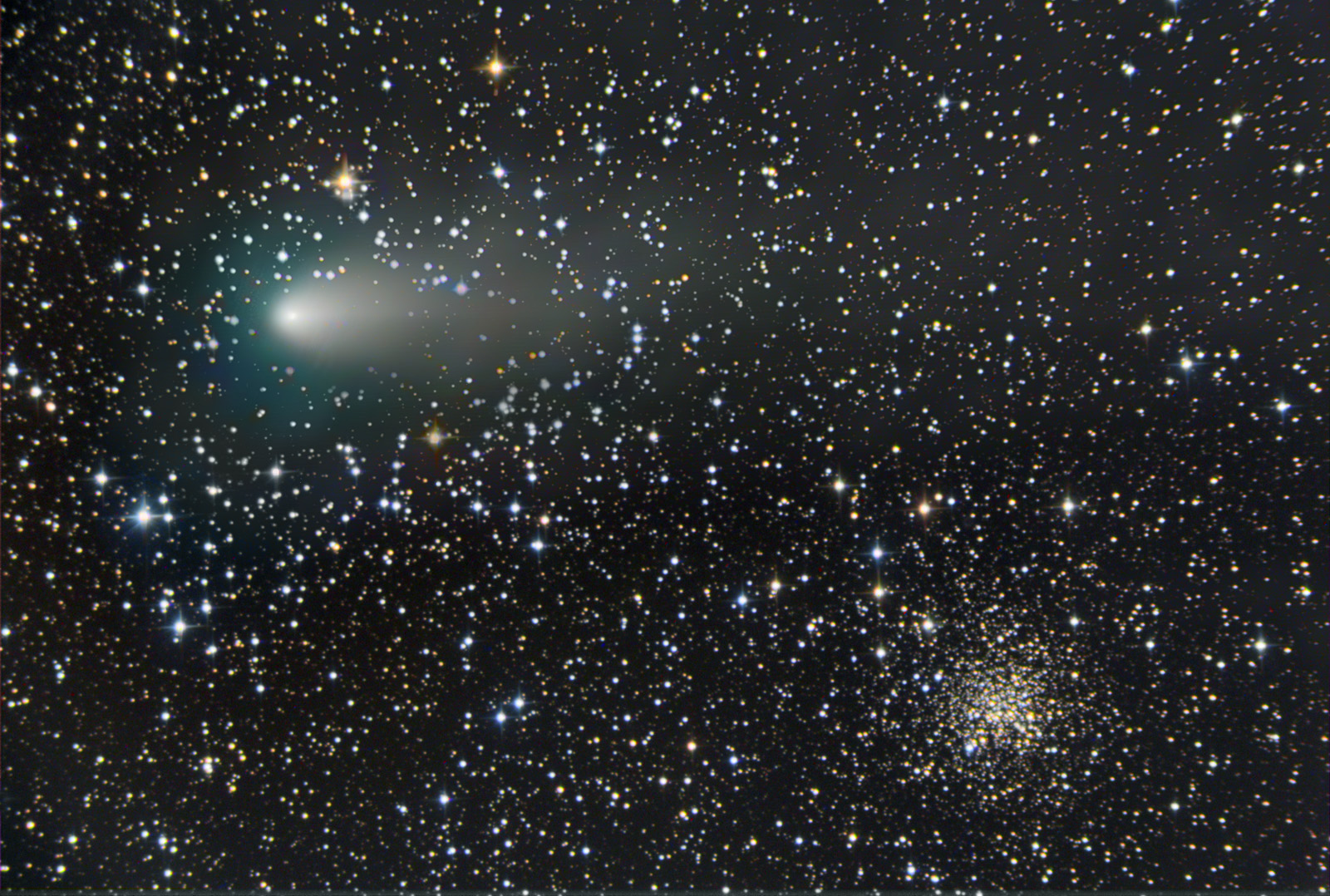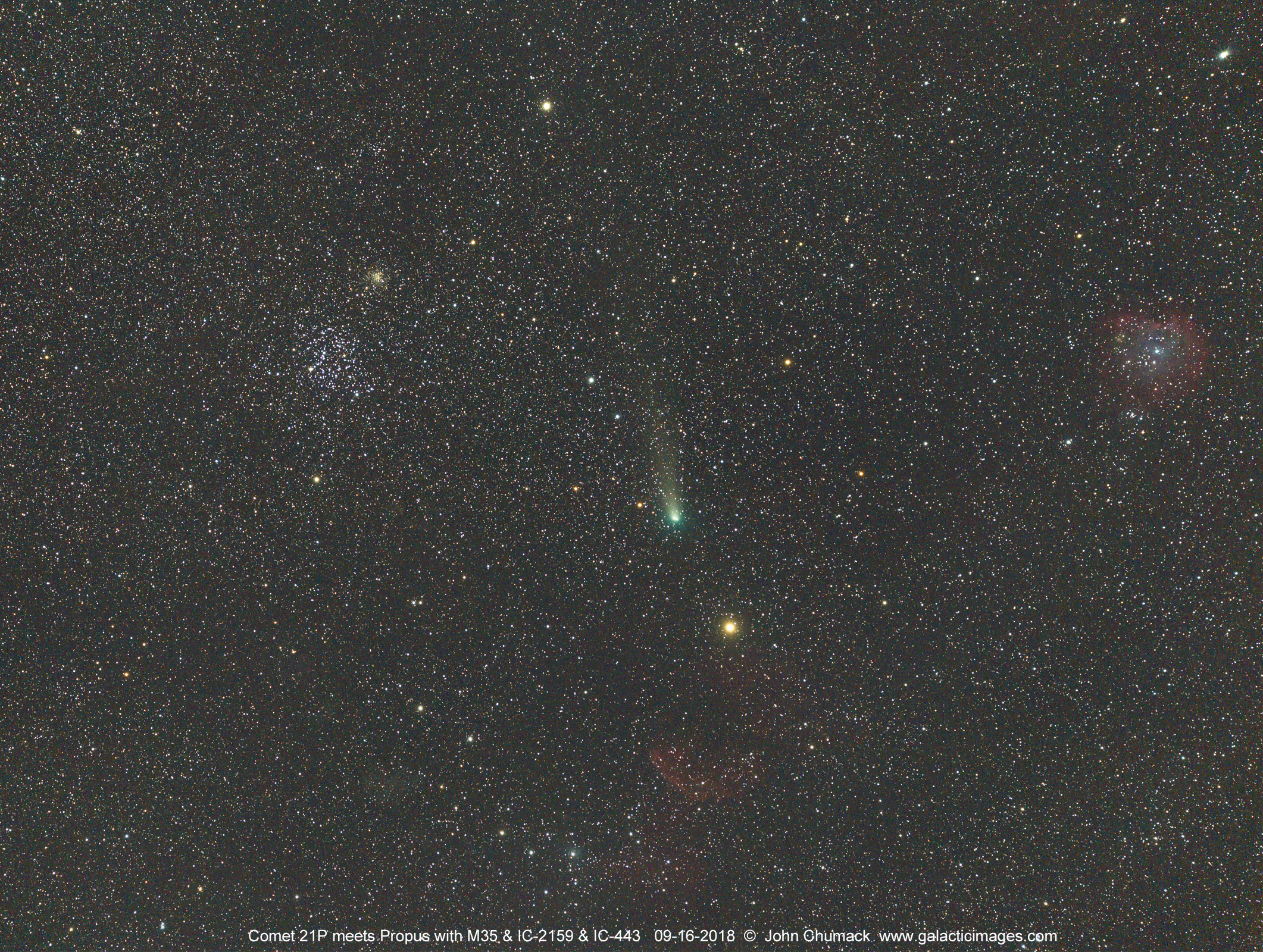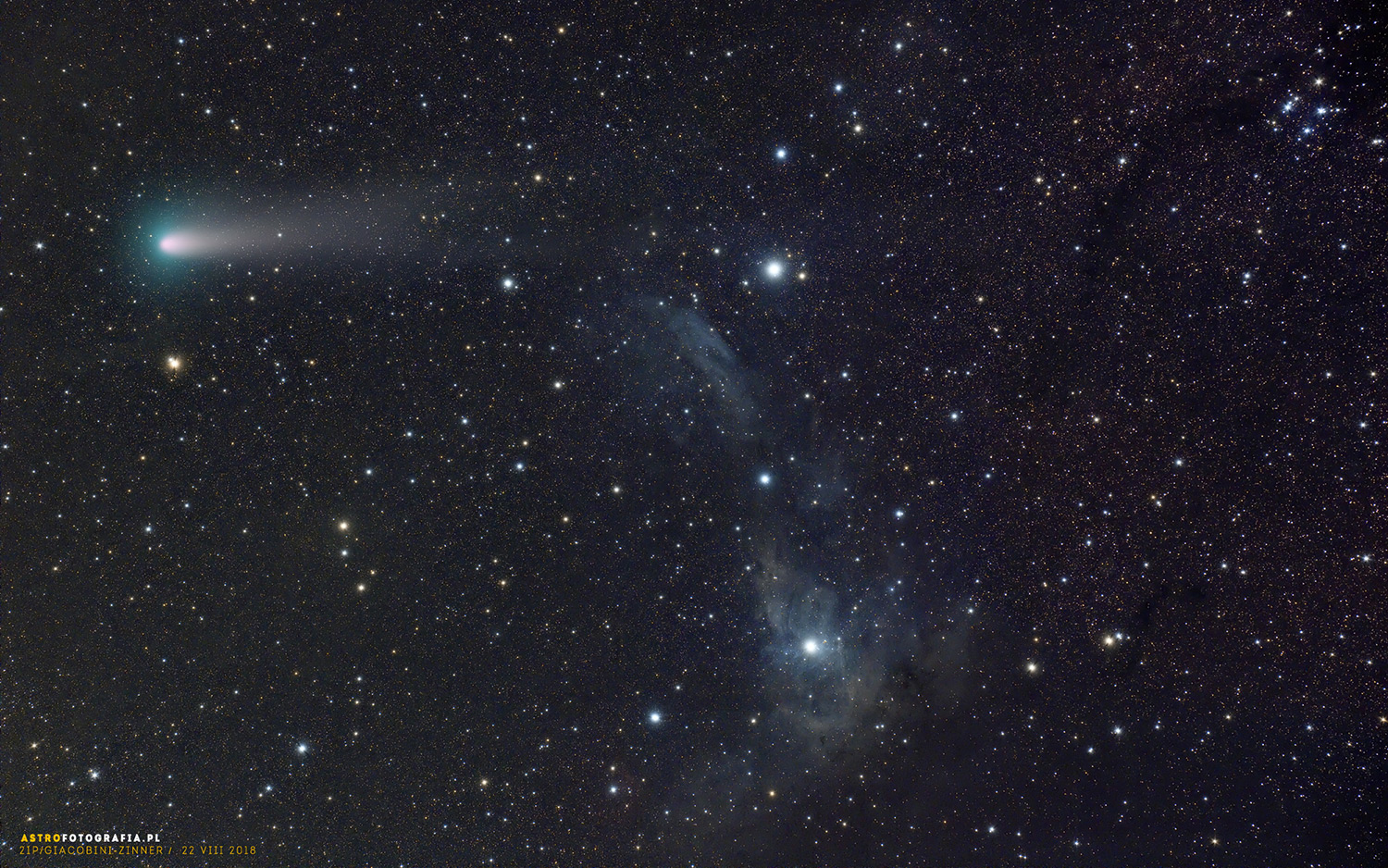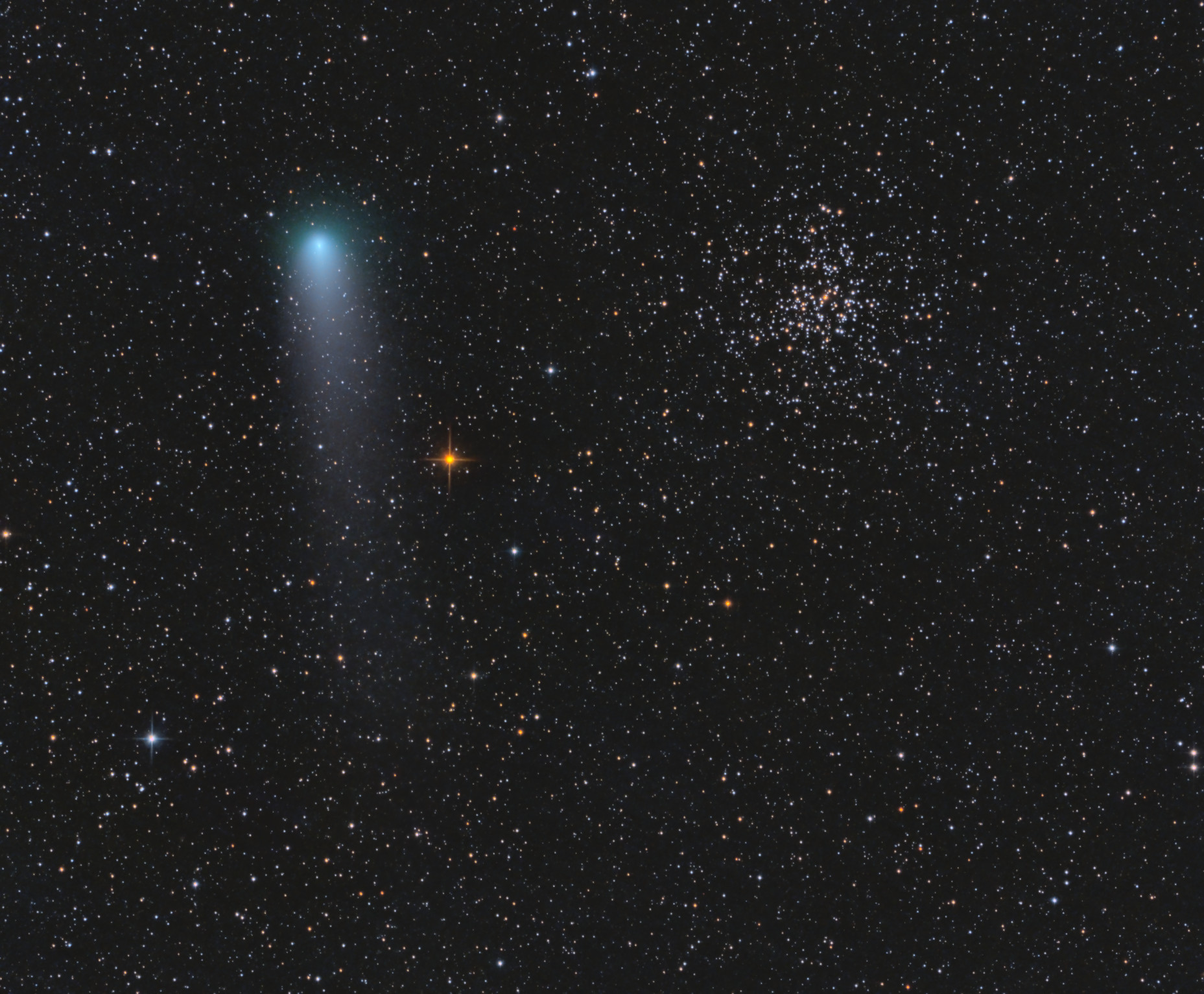Prelude to the Draconid Meteor Shower: Stargazers Capture Amazing Photos of Comet 21P

Comet 21P/Giacobini-Zinner made its closest approach to Earth as the object swooped around the sun in September, and astrophotographers around the world have snapped some incredible photos of the bright-green "dirty snowball" in deep space.
The periodic comet moves around the sun in a highly elliptical orbit that brings the object close to Earth about once every 6.6 years. As it zooms through the solar system, the comet leaves behind a trail of debris. Every October, Earth crosses paths with this trail of debris, and those "comet crumbs" rain down on the planet. This annual event is known as the Draconid meteor shower, and this year, the meteor shower will peak overnight tonight and early Tuesday (Oct. 8 and 9).
Comet 21P reached perihelion — or the point in its orbit at which it is closest to the sun — on Sept. 10 at 2:40 a.m. EDT (0640 GMT), just a few minutes after arriving at its closest approach to Earth. Because comets are icy objects, they become more apparent the closer they get to the sun as they heat up, melting the ice and releasing dust and gas into space. While Comet 21P was brighter than most comets, it was just too faint to spot without using binoculars or telescopes. [Amazing Photos: The Comets 21P/Giacobini-Zinner and 46P/Wirtanen of 2018]
In the time-lapse video above, you can follow along with Comet 21P as it traverses the open star cluster Messier 35 (also known as M35 or NGC 2168). Messier 35 is a cluster of stars located approximately 2,800 light-years away from Earth in the constellation Gemini.
Steven Bellavia, an astrophotographer with the Amateur Observers' Society of New York, captured the video of Comet 21P with M35 on Sept. 15, 2018, five days after Comet 21P reached perihelion.
In Payson, Arizona, astrophotographer Chris Schur also took advantage of the starry backdrop provided by M35 as Comet 21P passed in front of the star cluster. Schur captured the photo above on Sept. 15, 2018, at 2:44 a.m. local time (0844 GMT), when Comet 21P was about 37 million miles (59 million kilometers) away from Earth.
"A truly rare imaging opportunity this morning," Schur told Space.com in an email. "The comet traveled right over the Messier star cluster M35 and made for a gorgeous composition. The other star cluster in the field is a background object, yellowed by its distance of 10x further away."
Breaking space news, the latest updates on rocket launches, skywatching events and more!
The next day, on Sept. 16, astrophotographer John Chumack captured a photo of the comet as it whizzed by the bright star Propus (also known as Eta Geminorum) in Gemini. Also visible in this image are the Jellyfish Nebula (IC 443), located near the bottom of the frame, and the Monkey Head Nebula (NGC 2174), located to the right.
Chumack captured this 16-minute exposure using a Canon 6D DSLR camera with a 300-millimeter telephoto zoom lens. He was hoping to capture a longer exposure, but clouds rolled in and cut his imaging session short, Chumack told Space.com. "But I think it was just enough to complete the image," he said. "I love shooting with my telephoto for this wide-angle, deep-sky stuff."
In another view of Comet 21P, this one captured by astrophotographer Michał Kałużny three weeks before the object reached perihelion, you can see two distinct tails as the comet passes through the constellation Camelopardalis.
The broader of these two tails consists of dust, while the other is "a partially overlapping, fainter ion tail," according to Sky & Telescope. These two tails aren't always so easy to discern, and they often appear as one big, fuzzy blob.
On Sept. 11, Comet 21P passed near the star cluster Messier 37 (also known as NGC 2099) in the modern constellation of Auriga. Astrophotographer Alex Babiuc captured the comet with the star cluster in the photo above by combining 30 exposures of 120 seconds long each.
Comet 21P is currently on its way back out into the solar system and is becoming increasingly difficult to spot. But if you miss it, don't worry! The even-brighter comet 46P/Wirtanen is headed our way now and is expected to bring spectacular views by mid-December — even without the aid of telescopes or binoculars.
Editor's note: If you capture an amazing photo of comet 21P/Giacobini Zinner or 46P/Wirtanen and you'd like to share it with Space.com and our news partners for a possible story or image gallery, please contact managing editor Tariq Malik at spacephotos@space.com.
Email Hanneke Weitering at hweitering@space.com or follow her @hannekescience. Follow us @Spacedotcom, Facebook and Google+. Original article on Space.com.

Hanneke Weitering is a multimedia journalist in the Pacific Northwest reporting on the future of aviation at FutureFlight.aero and Aviation International News and was previously the Editor for Spaceflight and Astronomy news here at Space.com. As an editor with over 10 years of experience in science journalism she has previously written for Scholastic Classroom Magazines, MedPage Today and The Joint Institute for Computational Sciences at Oak Ridge National Laboratory. After studying physics at the University of Tennessee in her hometown of Knoxville, she earned her graduate degree in Science, Health and Environmental Reporting (SHERP) from New York University. Hanneke joined the Space.com team in 2016 as a staff writer and producer, covering topics including spaceflight and astronomy. She currently lives in Seattle, home of the Space Needle, with her cat and two snakes. In her spare time, Hanneke enjoys exploring the Rocky Mountains, basking in nature and looking for dark skies to gaze at the cosmos.




